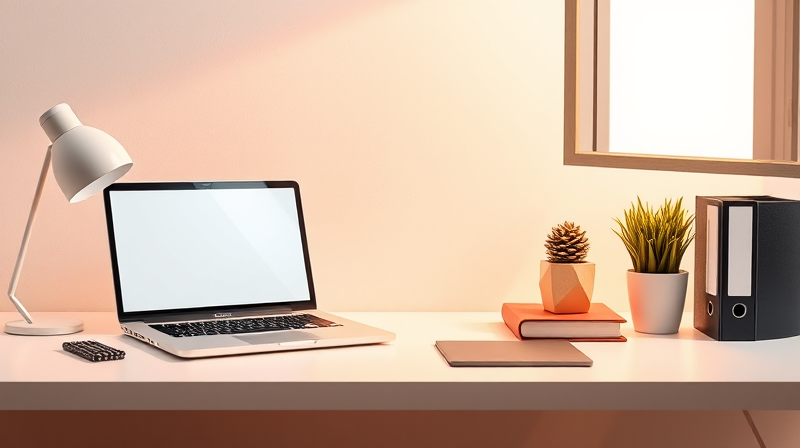In today’s digital era, maintaining a tidy and well-organized electronic working area is essential for achieving peak productivity and reducing everyday stress. Whether you work from an office or remotely, a clean digital space not only helps you locate files promptly but also inspires creativity and efficiency in your daily tasks.
Embracing a systematic approach to digital organization can transform your workday and ensure that nothing important gets lost among the endless sea of files and emails. The strategies discussed below offer a comprehensive guide to revamping your digital space, ensuring it remains clutter-free and highly functional.
Implementing a Consistent File Naming System
One of the most effective ways to bring order to your digital workspace is by designing and adhering to a consistent file naming system. By incorporating relevant details like dates, project names, and version numbers into file names, you set up a system that makes each document easily recognizable.
For example: Using a format such as "2025-01-15_ProjectAlpha_v1.2.docx" provides you with important contextual information at a glance. This practice not only simplifies the search process but also drastically reduces the likelihood of duplicate files cluttering your directories.
- Ensure consistency across all platforms and devices
- Create a naming convention that is intuitive for your workflow
- Review and update file names during regular digital maintenance
Utilizing Cloud Storage and Email Management
Cloud storage services such as Google Drive, Dropbox, and OneDrive offer fantastic opportunities to keep your files synchronized and accessible from any location. By mirroring your local file system with a clear folder structure in your cloud storage, you ensure consistency and easy access.
Similarly, managing your email effectively is crucial. Techniques such as the "Inbox Zero" method help prevent a buildup of unread messages. By creating folders, applying labels, and setting filters, you can categorize incoming emails and allocate specific times to manage them, thereby avoiding endless sorting during your workday.
To enhance your email strategy:
- Set specific time intervals for checking emails
- Use automation tools to manage repetitive tasks
- Keep only what is essential and archive the rest
Embracing Digital Minimalism and Regular Maintenance
Digital minimalism is about more than just decluttering your files – it’s a philosophy that emphasizes a simpler, more functional digital life. Regularly review your apps and files, removing those that no longer serve a purpose. This process not only frees up storage space but also minimizes the distractions that come with an overcrowded desktop.
Consider these steps for digital minimalism:
- Uninstall unused applications
- Delete redundant or outdated files
- Clean up your desktop by removing unnecessary icons
It is also vital to allocate time at the end of each day for a brief digital declutter. Spending just 10 minutes daily organizing files, closing excess tabs, and clearing out the downloads folder can preserve the neatness of your workspace over time.
Creating a Centralized Digital Hub and Leveraging AI Tools
Another excellent strategy is establishing a centralized hub for managing your digital life. This might involve using a personal dashboard that aggregates content from various sources or a dedicated note-taking app that houses all your crucial information in one place. Such hubs, enabled by tools like Notion or Evernote, can simplify your workflow and reduce the mental load associated with juggling multiple platforms.
Furthermore, modern technology offers AI-powered organization tools that are transforming the way we manage digital spaces. These smart assistants can automate the sorting of files, suggest optimal folder structures, and even predict which documents you may need next, streamlining your workflow considerably.
The benefits of using AI tools include:
- Automated organization of digital assets
- Enhanced predictive capabilities for file management
- Reduction of manual repetitive tasks
Establishing a Routine and Reaping the Rewards
The key to maintaining an organized digital workspace lies in developing a regular maintenance schedule. Setting aside weekly or monthly periods to review and reorganize your digital assets, such as clearing out old emails, updating file structures, and ensuring your backups are current, is crucial for long-term productivity.
Implementing these strategies not only improves efficiency but also alleviates the digital stress that comes with a chaotic working environment. Regular review and routine checks help keep your workspace at an optimal level, ensuring that you remain focused on the essentials and can dedicate your energy to creative and critical tasks.
In summary, a digital area that is neat and organized paves the way for increased productivity and a more enjoyable work experience. Embracing practices like a consistent file naming system, effective email management, digital minimalism, the use of cloud services, and even modern AI tools will help you build and maintain a streamlined, efficient, and inspiring electronic workspace.
Start today by implementing these tips, and notice how a well-organized digital environment can lead to enhanced performance, reduced stress, and overall better work-life harmony.








